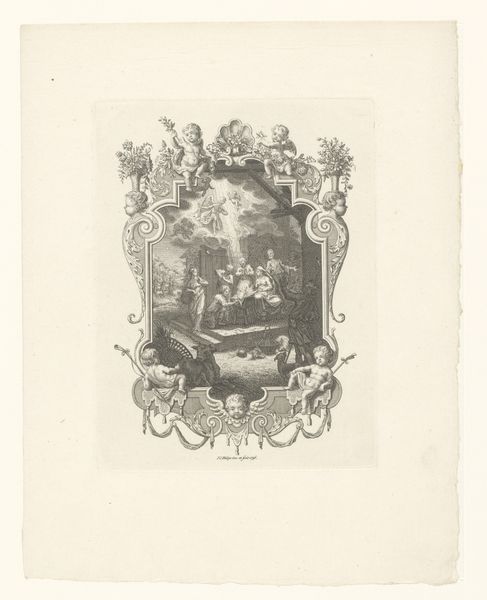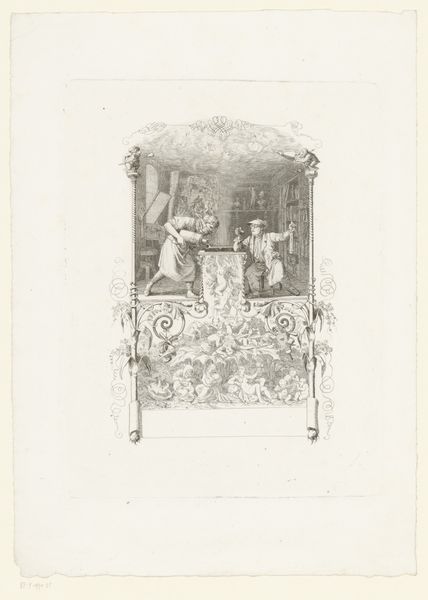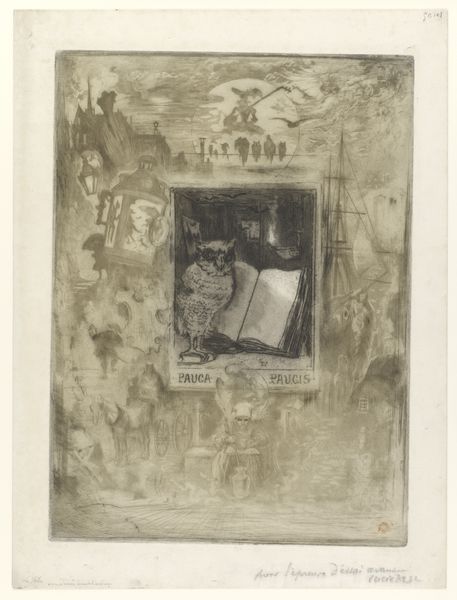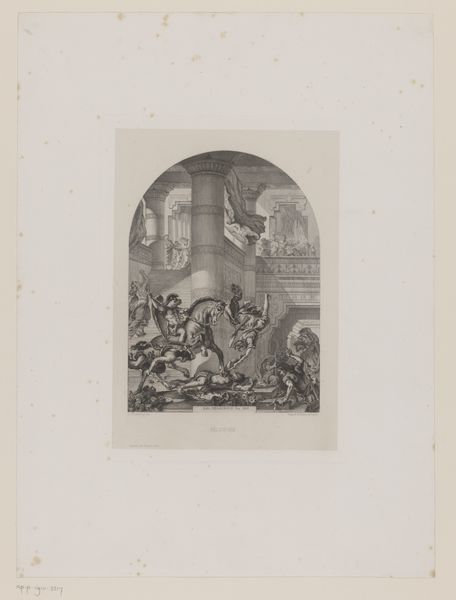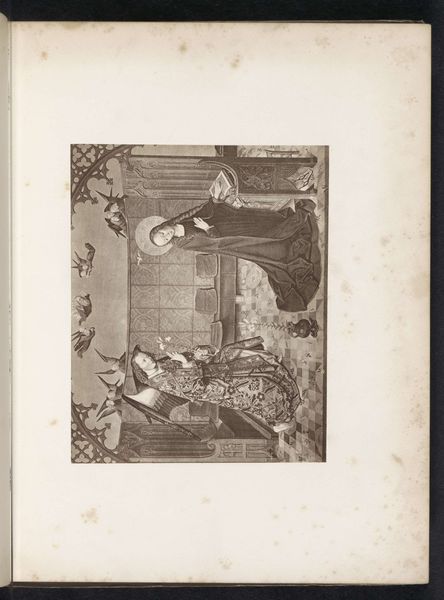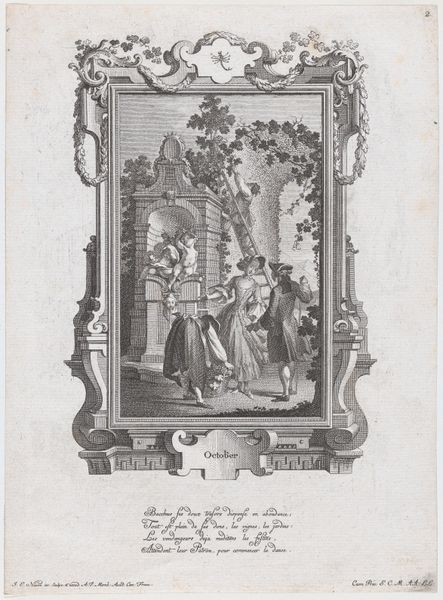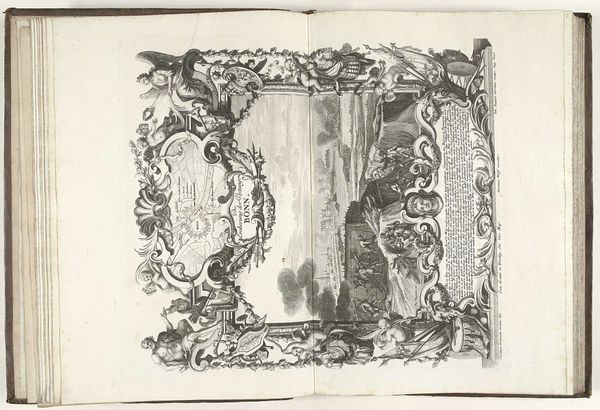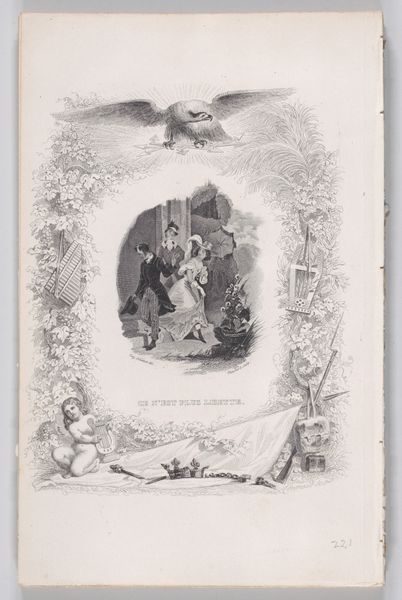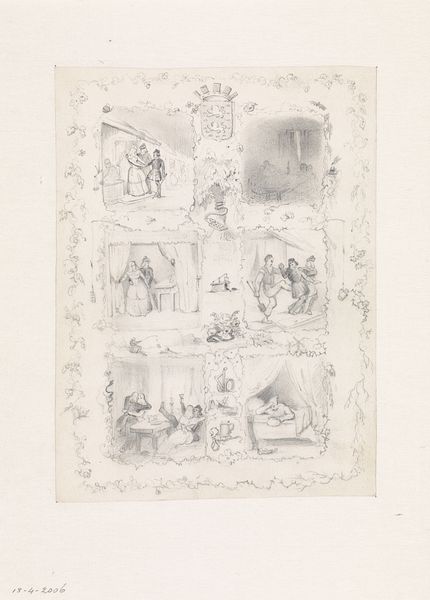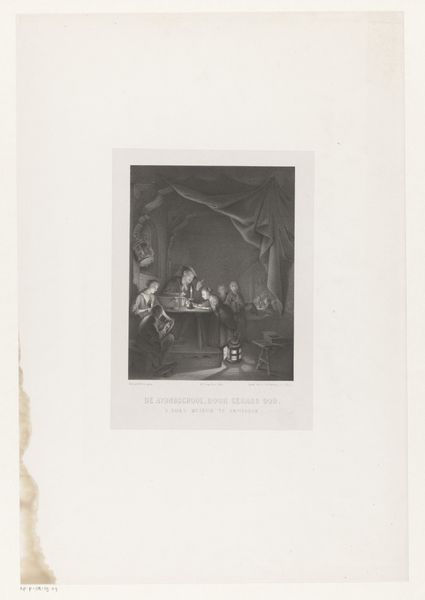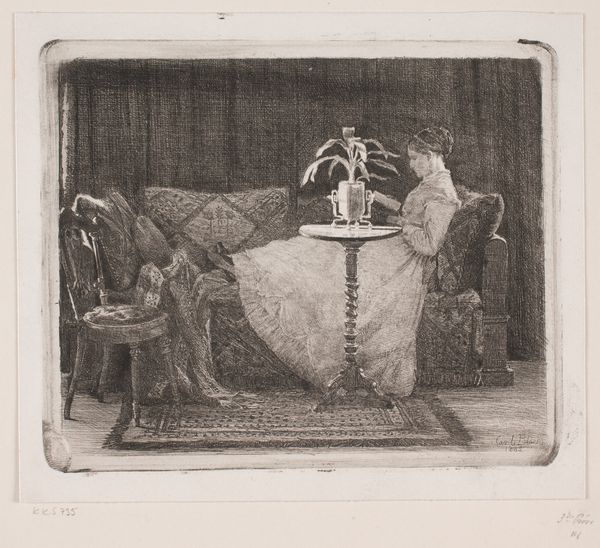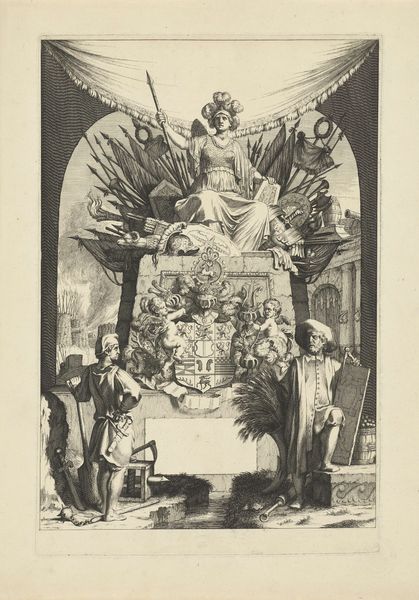
Titelprent voor de serie platen van de viering van het tweede eeuwfeest van de Utrechtsche Hogeschool, 1836 1836
0:00
0:00
huibvanhovebz
Rijksmuseum
print, etching, engraving
#
ink drawing
#
pen drawing
# print
#
etching
#
pen-ink sketch
#
pen work
#
history-painting
#
academic-art
#
engraving
Dimensions: height 567 mm, width 395 mm
Copyright: Rijks Museum: Open Domain
Editor: This is "Titelprent voor de serie platen van de viering van het tweede eeuwfeest van de Utrechtsche Hogeschool," created by Huib van Hove Bz in 1836. It's an etching and engraving. I'm struck by its theatrical quality – the heavy curtains, the central scene... it's like looking at a stage. What do you see in this piece, considering its historical context? Curator: I see a visual manifestation of institutional self-aggrandizement, deeply embedded in the political and social climate of the 19th century Netherlands. Consider the timing: 1836. The Dutch monarchy was relatively young, and institutions like the University of Utrecht were vital in shaping national identity. This print isn't just commemorating an anniversary; it's constructing a specific narrative about the university's role in Dutch history. Editor: So the almost dramatic presentation is intentional? Like propaganda, in a way? Curator: Precisely. The heavy drapery, the angelic figure bearing a commemorative plaque - these are all elements designed to elevate the university to almost mythical status. Notice the scene within the "stage" – it probably depicts a key moment in the university’s history, linking it to national events and figures. It is essential to acknowledge how history is curated and presented, particularly in publicly-funded institutions. Do you notice how the choice of imagery legitimizes authority and reinforces power structures? Editor: I hadn't really considered it that way. It's like they're trying to write their own history, or at least control the narrative. It really does seem performative now that you point that out. Curator: Indeed. These images played a crucial role in shaping public perception. They were a powerful tool for fostering a sense of national pride and institutional loyalty, subtly influencing the political landscape. Editor: I definitely have a better understanding of how art can serve purposes beyond just aesthetics, and how power and institutions affect its display. Curator: And that understanding, that critical perspective, is essential for navigating the visual world we inhabit.
Comments
No comments
Be the first to comment and join the conversation on the ultimate creative platform.
